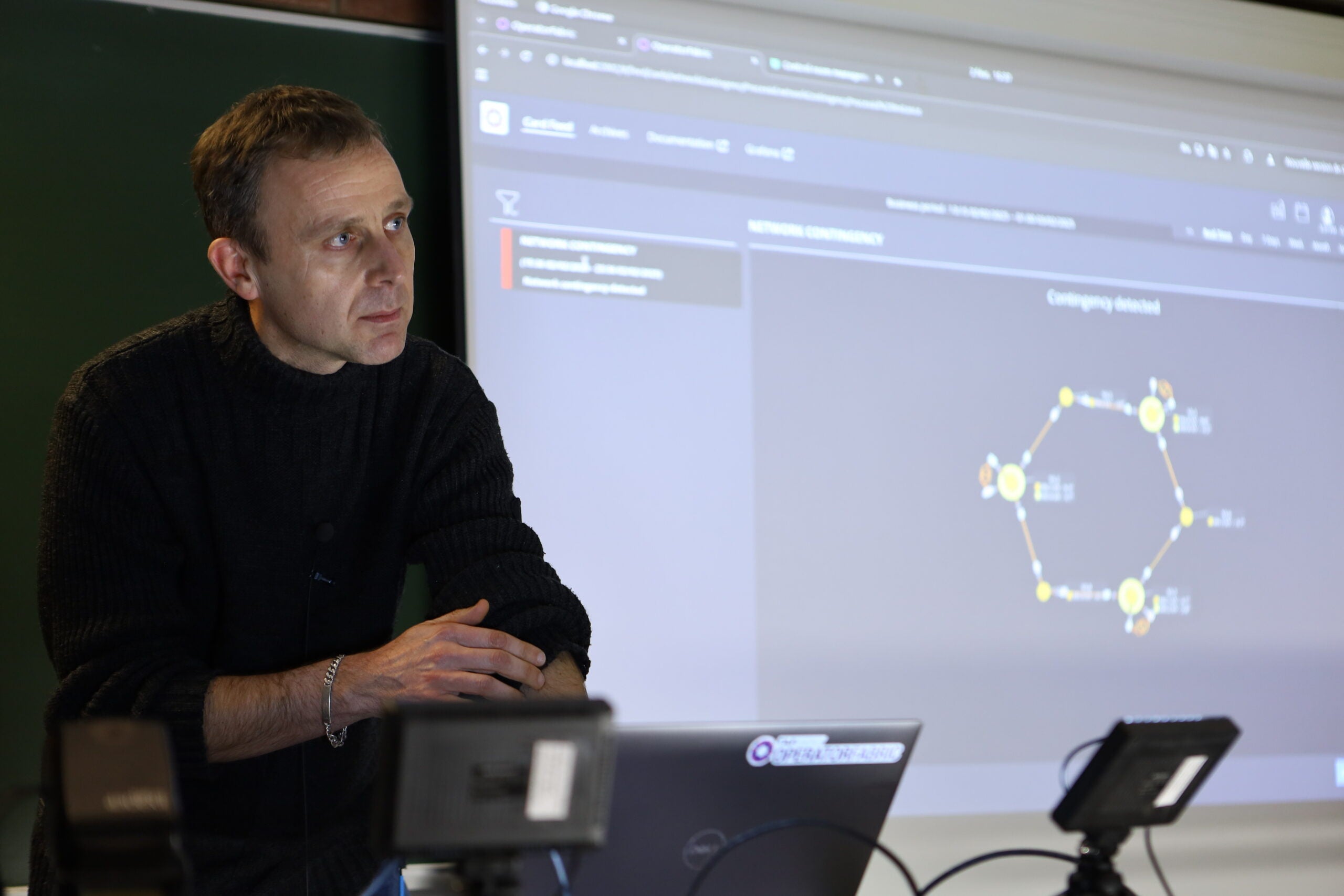OperatorFabric is a modular, extensible, industrial-strength platform for use in electricity, water, and other utility operations.
OperatorFabric aims to facilitate operational activities for utilities in two ways:
- Centralize real time business events in a single place to avoid having multiple screens/software. To do so, OperatorFabric provides:
- event notifications named “cards” with filtering features (severity, date, process…)
- event dispatching rules on a per user basis (based on groups, organizational entities, processes…)
- event-sending endpoints for business applications
- a mechanism of templating to customize events rendering (using HTML5)
- a view of events on a timeline and agenda view
- storage of all the events (archive feature)
- notifications via sounds
- possibilities to integrate screen form other applications
- Facilitate interactions between operational control centers:
- Share information in real time, as pre-formatted cards that can be sent either manually by operators or automatically by external solutions
- Introduce pre-formatted question/response exchanges between control centers. This can be used to implement operational processes (with the notion of “last time to respond”)
- Share events in calendar (also allowing repeating events)
In addition, the following features are available: internationalization, light/dark mode for the UI, real-time connected user supervision, and an authorization mechanism.
Integration with existing IT systems is an overarching concern, so OperatorFabric is built with: support for Firefox and Chromium-based browsers, Docker deployment, communication with business applications via REST API or Kafka, integration with external authentication systems (via OAuth2), and monitoring via Prometheus endpoints.
What does it do
To perform their duties, an operator must interact with multiple applications (perform actions, watch for alerts, etc.), which can prove difficult if there are too many of them.
The idea behind OperatorFabric is to aggregate all the notifications from these applications into a single screen, and to allow the operator to act on them if needed.

Notifications are visualized by cards sorted in a feed according to their period of relevance and their severity. When a card is selected in the feed, the right-hand pane displays the details
of the card: information about the state of the parent process instance in the third-party application that published it, available actions, etc.
In addition, the cards will also translate as events displayed on a timeline (its design is still being developed) at the top of the screen. This view will be complementary to the card feed in that it will allow the operator to see at a glance the status of processes for a given period, while the feed is like a “To Do” list.
Part of the value of OperatorFabric is that it makes integration very simple on the part of the third-party applications. To start publishing cards to users in an OperatorFabric instance, all they
have to do is:
- Register as a publisher through the “Thirds” service and provide a “bundle”
containing handlebars templates defining how cards should be rendered,
i18n info etc. - Publish cards as json containing card data through the card publication API
OperatorFabric will then:
- Dispatch the cards to the appropriate users (by computing the actual users who should receive the card from the recipients rules defined in the card)
- Take care of the rendering of the cards, displaying details, actions, inputs etc.
- Display relevant information from the cards in the timeline
Another aim of OperatorFabric is to make cooperation easier by letting operators forward or send cards to other operators, for example:
- If they need an input from another operator
- If they can’t handle a given card for lack of time or because the necessary
action is out of their scope
This will replace phone calls or emails, making cooperation more efficient and traceable.
For instance, operators might be interested in knowing why a given decision was made in the past, so the cards detailing the decision process steps will be accessible through the Archives screen, showing how the operators reached this agreement.
Technology stack
Development
OperatorFabric is mostly written in Java and based on the Spring framework. This makes writing and integrating software for a simplified and better coordination very easy.
Continuous Integration / Continuous Delivery
OperatorFabric is built and integrated using battle-tested tools and (open) platforms.
OperatorFabric Videos
FOSDEM 2025 Energy Devroom: Control room management with OperatorFabric
Manage Your Critical Situations with OpFab - Clément Bouvier, RTE France
OperatorFabric A Smart Assistant for Operators Boris Dolley & Hanae Safi
Accelerate Your Transformation to System Operations with OperatorFabric
Recent OperatorFabric News
Project Special Interest Group: Grid Operations
Project Lifecycle Stage: Early Adoption
This project and all its sub-projects are licensed under Mozilla Public License V2.0. OperatorFabric was initiated by RTE and contributed to LF Energy in 2019.




TSO-DSO Coordination Using OperatorFabric - Sascha Eschmann, RTE international
September 22, 2025 2:40 pm